Codenamed Operation Iceberg, the invasion of Okinawa was the largest amphibious landing in the Pacific theater of the Second World War which started on April 1st, 1945.
In Spring 1945, Allied forces were advancing on Japan, and Allied planes were able to bombard her cities. Okinawa, a 70-mile long island 350 miles from Japan, was seen as the final step before a full-scale invasion of the Japanese Homeland.
Invading Okinawa
120,000 Japanese troops under General Mitsuru Ushijima stood ready to defend Okinawa, though the Allies believed there were only half that many. They were supported by 10,000 aircraft and a naval force led by the largest battleship ever built, the Yamato.Against them came 155,000 American troops, consisting of Marines and infantry, though twice this number would be involved before the end. They were led by Lieutenant-General Simon Bolivar Buckner and supported by 1,300 ships, including a large British carrier group.
From October 1944 to March 1945 the Americans launched air raids against Okinawa, destroying hundreds of enemy aircraft. A naval bombardment was added from 18 March, despite kamikaze pilot attacks that damaged four aircraft carriers and took out two ships.
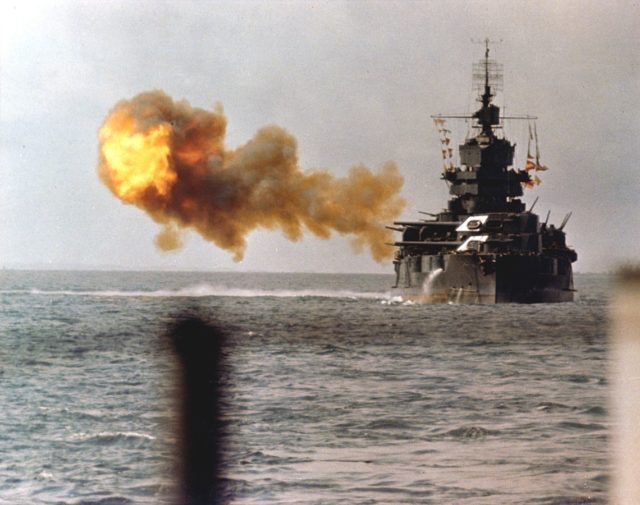
On 1 April, the day of the invasion, a devastating bombardment fell on the island – 44,825 shells, 22,500 mortar rounds and 32,000 rockets. The approach to the island had been cleared of mines, and the troops were ready to go.
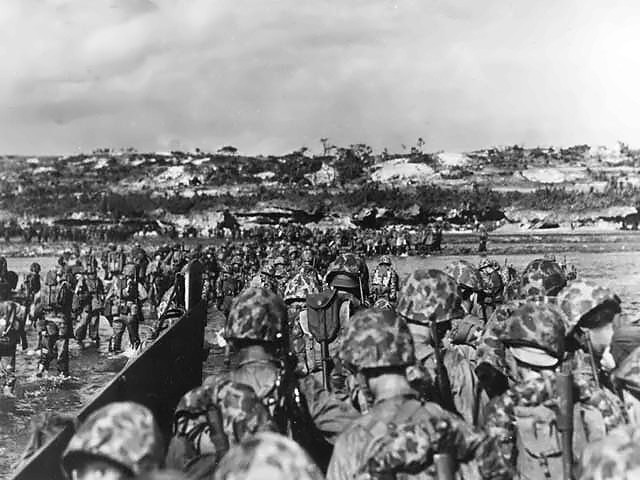
By the time darkness fell on 1 April, the Americans held an eight-mile wide beachhead with 60,000 men.
The Struggle for the Island
The seemingly ‘easy’ invasion to continue into the next day. American soldiers crossed the width of the island, dividing the Japanese in two. Two airfields were captured, an important step given the kamikaze attacks on US ships.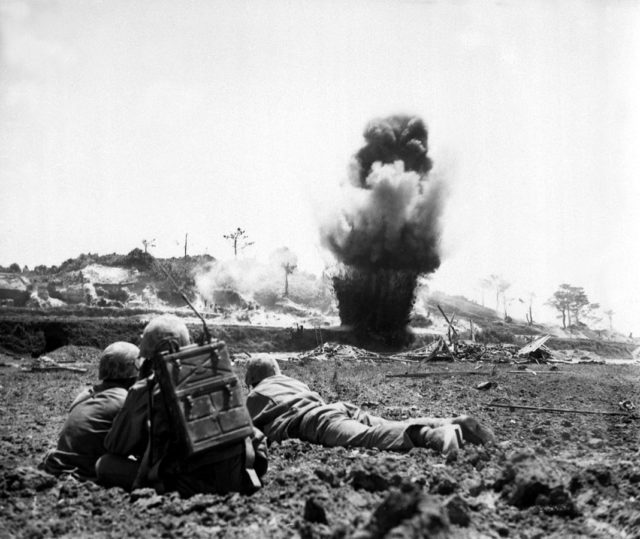
Ushijima could not win, but he wanted to keep the Americans tied down with a war of attrition. On 4 April, the US 24th Corps met the beginnings of this resistance at the city of Shuri.
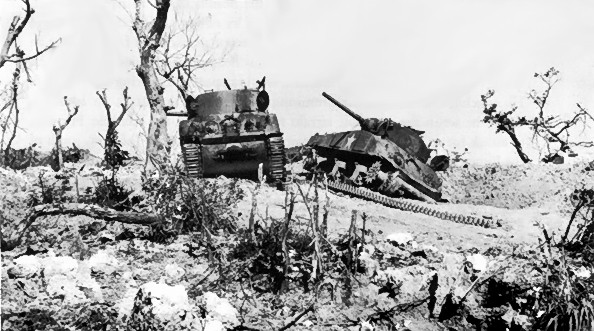
The Japanese fleet also undertook a suicide mission. Using what little fuel remained, the Yamato, the cruiser Yahagi and eight destroyers headed for Okinawa, where they intended to beach themselves, adding their guns to the firepower of the defenders. But they were spotted on the way. Lacking air cover, they were easy targets for the American flyers. The Yamato, the Yahagi and four destroyers were sunk.
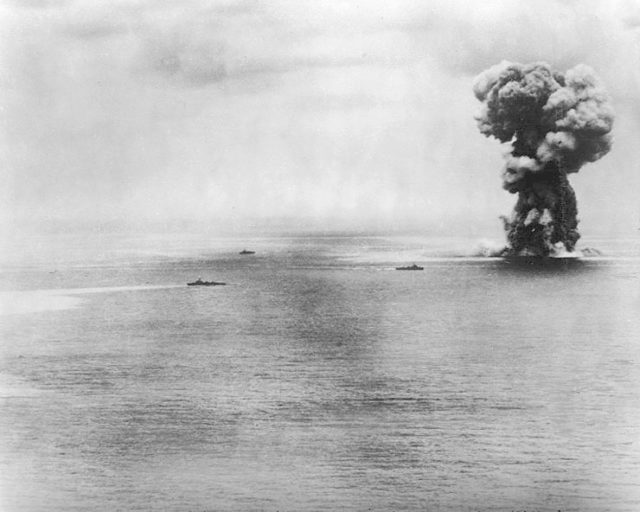
Despite his own horrifying casualties, Ushijima went on the offensive on 12 April, sending waves of men against the Americans in attacks almost as suicidal as those occurring at sea. Every assault was driven back by the Americans, and after two days the Japanese returned to defending.
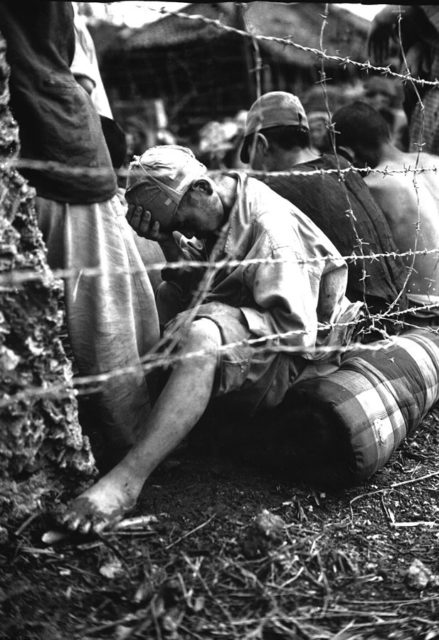
Fighting to the Bitter End
Buckner ordered greater bombardments and a renewed offensive, but the Marines could not break through the well-prepared Japanese defences. Rather recklessly, Ushijima ordered another offensive on 2 May, in which he lost 5,000 troops.A change in American tactics came on 11 May when Buckner ordered attacks to be focused on the Japanese flanks. This began to work and, rather than become surrounded, Ushijima pulled back on 21 May. A rearguard fought fiercely, holding onto Shuri until 31 May. Meanwhile, the rest of the Japanese made an orderly retreat to the southern tip of Okinawa and their last stand.
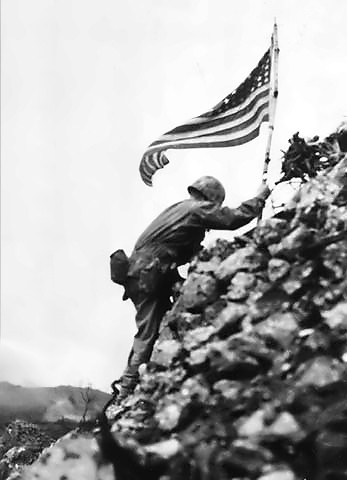
General Buckner was fatally wounded 18 June. He was soon followed by his opposite number. On 21 June, Ushijima and his chief of staff committed hara-kiri outside their headquarters rather than lose or surrender.
Following their general’s final order, the Japanese continued a guerrilla war against the invaders until the end of June. When 7,400 men gave in, it was the first large surrender of Japanese soldiers in the entire war.
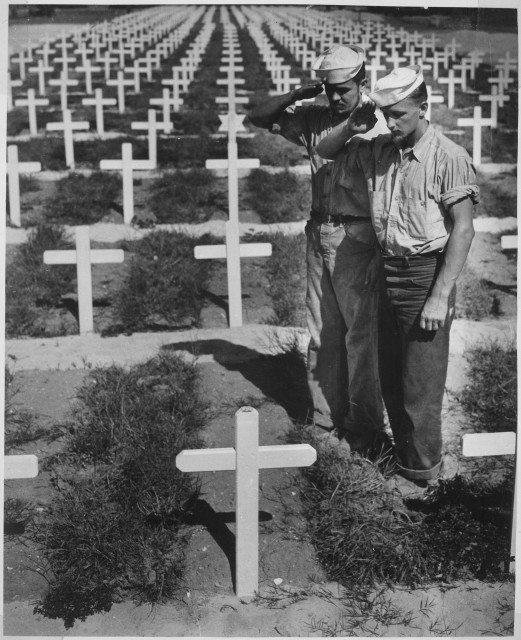
Ernest Taylor Pyle (August 3, 1900 – April 18, 1945) was a Pulitzer Prize–winning American journalist. As a roving correspondent for the Scripps-Howard newspaper chain, he earned wide acclaim for his accounts of ordinary people in rural America, and later, of ordinary American soldiers during World War II. His syndicated column ran in more than 300 newspapers nationwide.
From 1935 through 1941 he traveled throughout the United States, writing about rural towns and their inhabitants. After the U.S. entered World War II, he lent the same distinctive, folksy style to his wartime reports, first from the home front, and later from the European and Pacific theatres. He was killed by enemy fire on Iejima during the Battle of Okinawa.
At the time of his death he was among the best-known American war correspondents. He won the Pulitzer Prize in 1944 for his spare, poignant accounts of "dogface" infantry soldiers from a first-person perspective. "No man in this war has so well told the story of the American fighting man as American fighting men wanted it told", wrote Harry Truman. "He deserves the gratitude of all his countrymen."



My cousin helped clear the beaches for the Okinawa invasion. Till the day he died, he could not stand the Japanese, even to the point of leaving the room if a Japanese walked in.
ReplyDeleteHey Old NFO;
DeleteI heard the same thing from other WWII Pacific vets. The Pacific war showed us how to be ruthless and the modern example for dealing with ISIS.